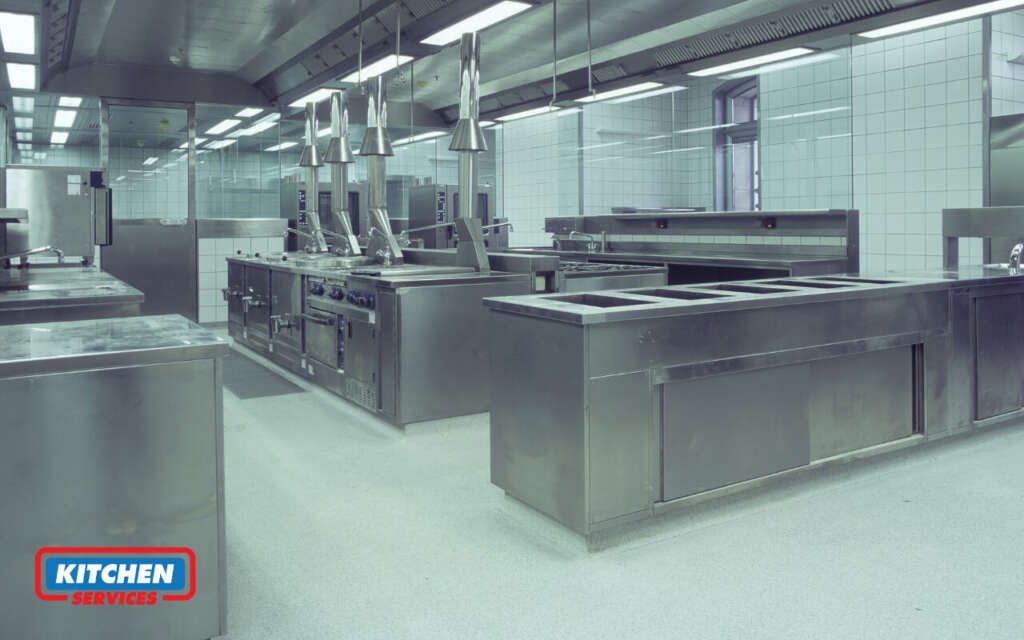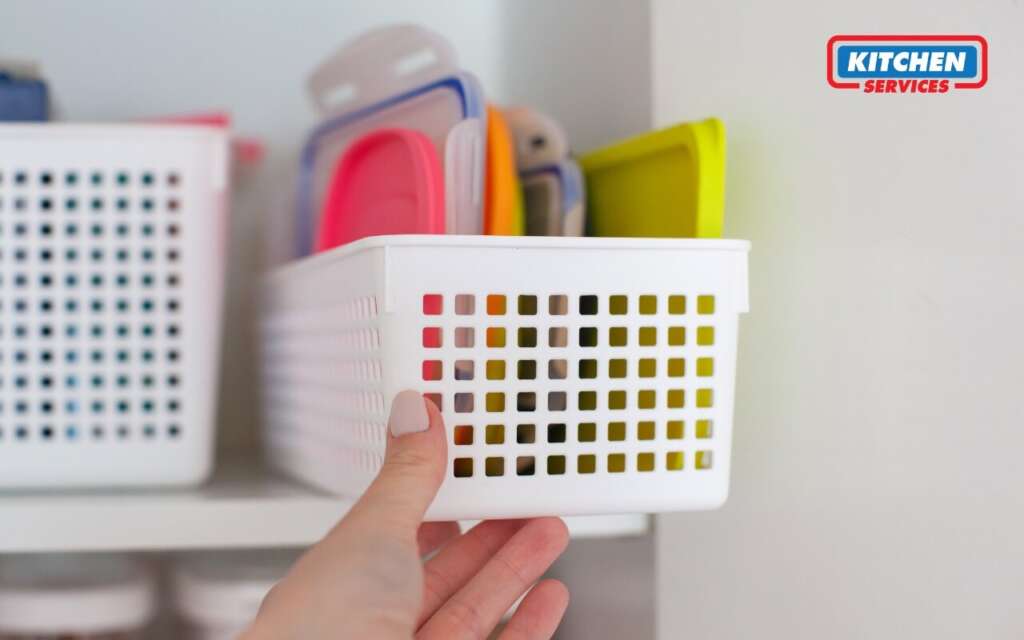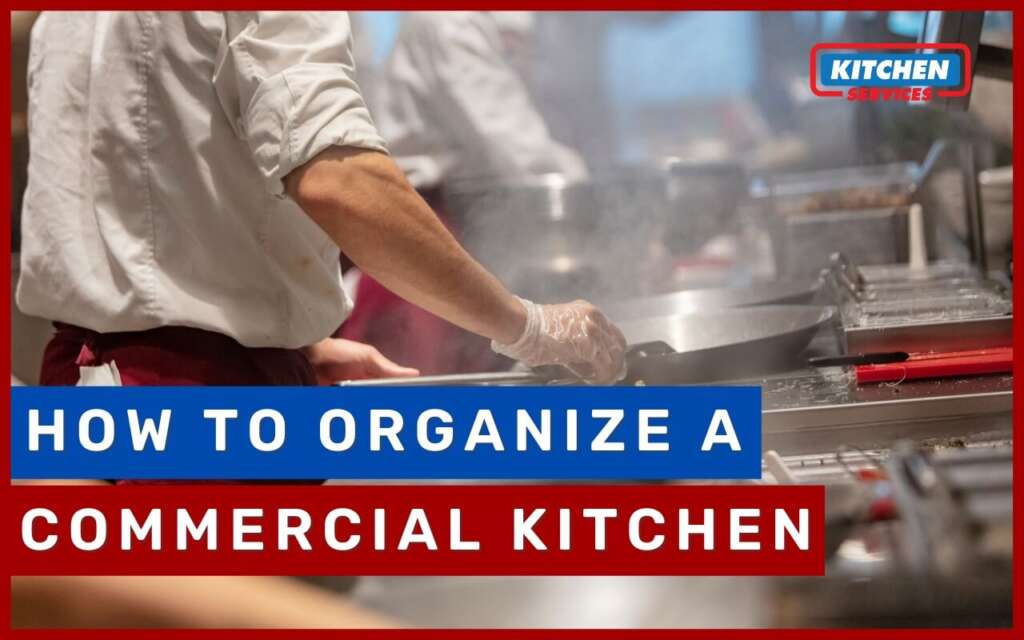There is no chance that your commercial kitchen can be unorganized. All this depends on the size of the kitchen, the staff as well as the productivity. No doubt that your kitchen can be a rather hectic area. In case you are unorganized, this will lead you to have poor quality food, unhappy customers, and even ill and injured workers. Particularly in the time of coronavirus, all your customers would be extra mindful of the cleanliness and organization of the environment in which their food is prepared.
No matter what you own whether it be a large, buzzing restaurant or a small corner pub, your commercial kitchen is the heart of your entire organization. Also, it is one of your biggest investments which requires routine cleaning and equipment maintenance throughout the week. The basic way to maximize your space is by organizing it logically and most efficiently.
But do you know where we have to start? Fortunately, we’ve come up with some basic commercial kitchen organization ideas to help you out in this regard. Let’s see How to organize a Commercial Kitchen.
If you are starting a restaurant or commercial kitchen in Los Angeles and around, We at Kitchen Services can do a perfect Kitchen Hood Installation for your kitchen. Not only that, we also provide commercial hood cleaning and repair. Besides cleaning and repair, we offer, Kitchen exhaust maintenance services for your commercial kitchen setup.
How to organize a small commercial kitchen

Learning how to organize a small commercial kitchen is the most important step to running a safe and successful business. Kitchen organization will reduce the risk of any possible accidents within the workplace as well as the number of accidents with your client’s orders.
In case you are struggling with or simply looking for ideas to help you organize your kitchen space, then you will want to keep the following tips in mind.
1. Hang Your Most Frequently Used Items Within Easy Reach
You will never have enough space in a commercial kitchen for everything that you need. Not just you but this is the case for most of the kitchens, but that is beside the point. While discussing how to organize your commercial kitchen, you will have to make the most of your storage space, and one way to do that is by hanging some of your most commonly used items within your reach.
These can be pots and pans or even cooking utensils that are used regularly. Hanging these items near your cooking space can help you cut down on your preparation time because everything is within easy reach. Hanging them also helps to open up valuable shelf storage space within your storage units.
2. Allocate “Areas” in Your Kitchen
When we talk about storing any of your appliances and utensils, one of the easiest ways to stay organized is by designating zones that are there in your kitchen. This means having designated areas for your small wares, commercial food processors and mixers, and whatnot.
Not only these allocated zones would help you to keep your equipment organized, but they can also help you to keep your staff focused on their designated area, which, in turn, will help to maintain an orderly kitchen. A lot of larger restaurants have designated stations for fish, pastries, and pasta, and while you may not have that luxury, you can still set up designated spaces for your work team to streamline your day-to-day process.
3. Get rid of all those closed Storage Units
When we talk about storage units, you will want to completely get rid of your old, closed storage units in replacement of open shelving. All over again, it would not only help in cutting down on your time spent searching for items, but it will also help you to easily identify what goes where during your end-of-day cleanup process. It is also often referred to as metro racks, these simplistic metal storage units will make storing your stock and supplies simple by keeping everything out in the open. With all these adjustable shelving, you can easily customize these types of storage units so that they can suit your every need with little to no difficulty at all, which is particularly important for smaller commercial kitchens where maximizing space is critical.
While you can easily store many of your preparation materials in these open storage units, you obviously can not store your refrigerated or frozen products on these open racks. But keep in mind that, this does not mean that you have to settle for a traditional cramped refrigeration unit simply. Utilizing walk-in refrigeration units often allows you plenty of space to organize your refrigerated items in a similar way to your non-refrigerated items.
4. Utilize the “First In, First Out” Method with Refrigerated or Frozen Items
The first in, first out method can help you prevent this by helping you organize your food storage. It is not at all a difficult method to execute, either. In most commercial kitchens, if an item is placed towards the back of the refrigerator, then it was purchased first. As more material would be added to the unit, it would be placed in front of the original item. As an alternative to grabbing things from the front of your storage, you want to grab them from the back. The key to this method is to always put the item back in its place after you have used it, otherwise, you run the risk of throwing off your expiration orders.
Read our full guide on How to organize a Commercial Freezer
5. Label Everything
If you are not the best at remembering what is or what expires when then, this tip is especially for you. The best tip on how to organize your commercial kitchen is to label everything you put in your refrigerator, freezer, as well as a pantry. The best way for you to do this is to label each item as to what it is when you bought or opened it, and when it expires. This would make it easy to detect all the crucial information when you are trying to move quickly and keep yourself organized even if you’ve not placed everything back in its correct spot.
These kinds of bins are available in a wide range of capacities with many able to hold more than a hundred pounds of dry goods at a single time. The large-capacity units generally have casters that would allow you to move the products effortlessly where needed. Units that have no casters can be placed on shelves for easy access. The ingredient bins can be easily labeled as well so you can instantly identify which is which.
Storage area in a Restaurant Kitchen

The storage area in your restaurant kitchen is divided into dry storage and storage for easily perishable goods. Here we have listed the best commercial kitchen storage solutions for you;
- Dry storage
Dry storage is located next to your main kitchen area. As the name suggests it has to be dry, cold, and dark as well as facing North. All the food is kept in its original packaging that has to be assorted on the shelves, in wooden crates, or closed closets.
- Storage for easily perishable good
Storage for easily perishable goods has to be located close to the preparation area. All the goods are kept in large refrigerators at low temperatures, 4-5 days the most. Meat, fish, and vegetables can be kept in freezers for an extended period.
- Preparation area
As we know every large kitchen has a separate room for either meat preparation or any other task. It has to be separate from the fish preparation area and also it has to be close to the cooking area. It must have all the essential tools and appliances. The fruit and vegetable preparation area must also be properly equipped and separate from the other two.
How to Organize Restaurant Supplies?
This is probably a no-brainer, and you must be using shelves already in one way or another in your business. But you can always supercharge your shelving uses so that you can make for a more efficient and organized commercial kitchen. When anybody talks about shelving, they might think of floor models and wire shelves. This can be considered as the bread-and-butter of the shelving world. They are being used for storage in any of your commercial kitchens, in your walk-ins, and even in the front of the house. They are just about everywhere. Good shelving is the centre of attention in any commercial kitchen organization effort.
But there are some other types of shelves to consider as well. For example, wall-mounted shelves can help free up counter space just by utilizing the area that is above the counter that would otherwise go unused in any case. You can also get shelving installed over things like refrigerated prep tables as they are easy to access for your kitchen that utilizes space that would normally be empty. Mobile shelves are also considered the key for many businesses. The ability to move your shelving around on casters would help you be more efficient for reoccurring tasks that are done on a sporadic basis. You can always move the shelf to where you need it and you can then store it when you are done without any fuss.
Organize Your Organization
Regardless of what kind of shelving you are using, there are always some simple things that you can do so that you can make those shelves work better for you and our employees. Creating uniform spaces for related items will always help everyone because it is always easier to find what you are looking for immediately. But even if you have the best intentions, this type of organization can drift over time. you may also consider using shelf tags to label the different areas. This can help as new workers come into the business. Not only will they know what they should expect to find there, but they will know what NOT to put in that area as well. You may also consider using storage bins that can also sit on your shelves. This is always a good option for items that are not used very frequently.
How to set up a commercial kitchen?
- Install Refrigeration.
- Install Storage.
- Install Cooking Equipment.
- Buy Food Preparation Stations and Small Wares.
- Install Fire, Safety and Sanitation Equipment.
How to organize a kitchen for efficiency?
Organizing a kitchen is somewhat a matter of personal preferences, but these tips can help you get the job done more efficiently
- Create Designated Workspaces in the Kitchen
- Put Frequently Used Items in Close Reach
- Use Racks and Bins in Your Cabinets and Drawers
What are the 4 guidelines for organizing a kitchen?
- Store things where you use them.
- Group like items together – store all bakeware in the same cupboard, all wooden spoons in the same ceramic crock, all spices in the same drawer.
- Store your most frequently used items in the most accessible places.
- Declutter yearly.

